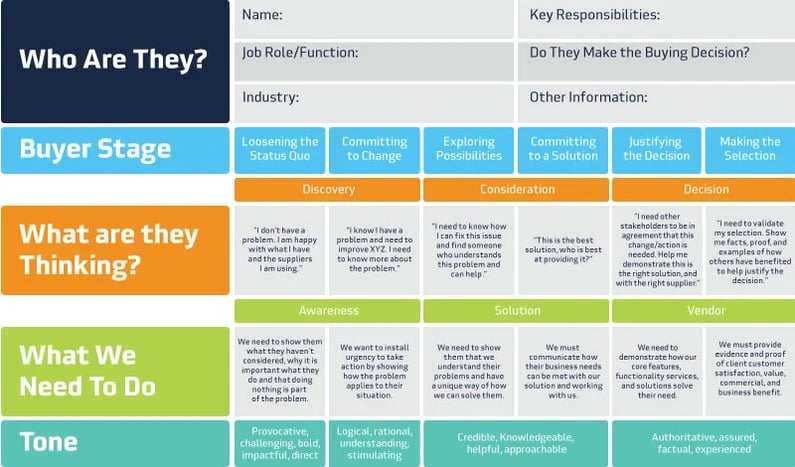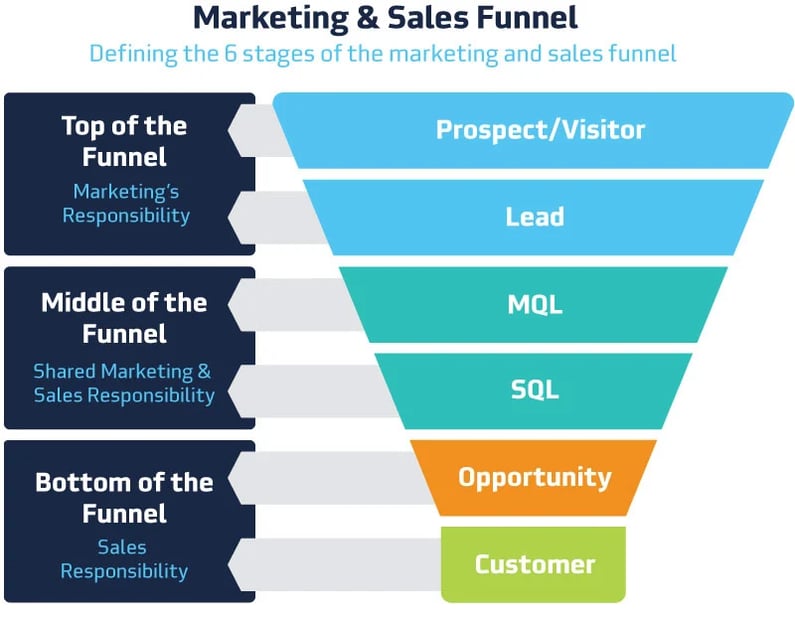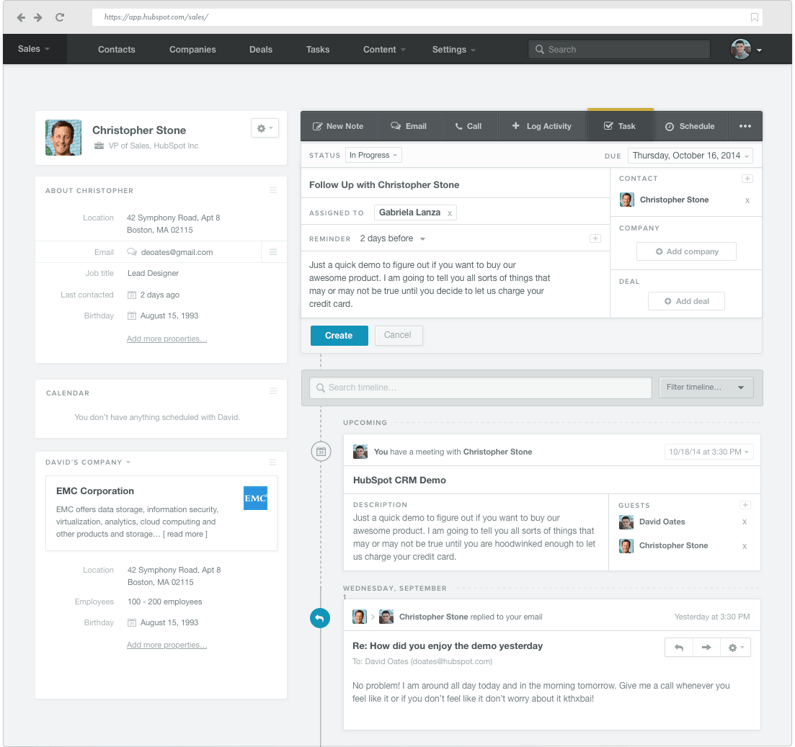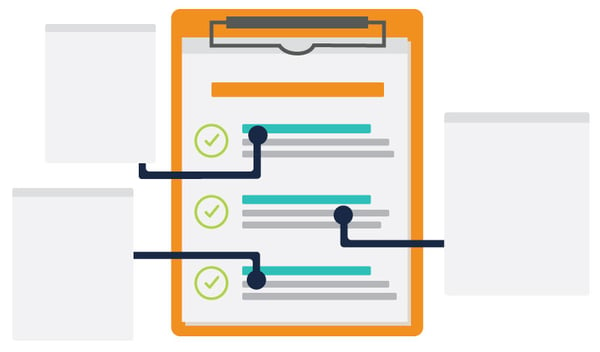How to Simplify Your Marketing & Sales Process in 7 Easy Steps
 TANK New Media
|
TANK New Media
|

Having a Defined Sales Process is the First Step to Setting Up Your Sales Team for Success
Most companies don’t do this. Or if they do, it's not done well.
What is the definition of a sales process? It is the optimal process through which visitors to your website convert to leads then become customers of your company. The seven steps below will help you figure out your process and implement it for your sales and marketing team.
It is extremely important when trying to simplify marketing and sales processes that it is a joint-venture between sales and marketing departments.
- Marketing needs to provide input on what collateral and assets need to be created and how they will look.
- Sales needs to provide input on the questions people are asking, the conversations they have with prospects, and the type of people who become customers.
This is a team effort and will only be successful when both sides are working together.
Simplifying Your Marketing and Sales Processes with These 7 Steps.
Step 1. Outline the Customer Journey.
This can be a simple or complex document. We recommend starting simple and adding complexity as you discover information to fill in the gaps or add clarification to the journey.
While there are many ways to roadmap the customer journey, here's one example.

As you create your document, think about your target audience (also known as personas), what problems they have, and how you can provide relevant content to solve their problems.
Step 2. Create a Process that Guides Your Leads to Becoming Customers — this is Referred to as the Buying Process.
Here's what the buying process looks like for us:
- When a prospect searches Google for "Digital Marketing in Kansas City," they should be served up several digital marketing companies including TANK New Media (TANK).
- Then the prospect will read various pages on the website including our services pages and blog posts which educate them about our digital marketing, branding, website development, and sales enablement services. One of the blog posts provides an example of a client that we helped. This blog post has a call-to-action (CTA) to read and download a case study on how we helped the client. The prospect submits their email address in exchange for a PDF of the study.
- When the prospect enters their contact info, they become a lead. As a lead, they'll begin to get useful emails from TANK, educating them on marketing and sales, pointing them to other blog posts, content offers, and resources that provide value to them.
- As the lead continues to express interest and engages with our website, emails, and social presence, they become a marketing qualified lead (MQL). The sales team will begin reaching out to them proactively to provide customized value and to share how TANK may be able to help them reach their business goals through marketing and sales.
- When the MQL expresses the desire to start a conversation about a solution for their company, they become a Sales Qualified Lead (SQL). At this point in the process, the sales team is working to gain insight on the SQL's specific pain points and possible solutions to include in a proposal.
- When the SQL accepts a proposal and signs a contract, they become a part of the TANK New Media family of customers.
 The steps of the sales process should include:
The steps of the sales process should include:
- Identifying which stage the lead is at currently.
- Understanding what key things need to be learned and accomplished in this stage.
- Figuring out what needs to be done to prep them for the next stage and how to get them there.
After you have your sales process defined, it is imperative that you have a way to track and move your prospects through the process. A Customer Relationship Management (CRM) software will help you track the location of each lead in your sales process as well as the actions taken in regards to that specific lead and next steps for the sales team.
Your process may be similar or much different. The key is to have a process. This allows you to review, analyze, and adjust over time.
Step 3. Establish the Buying Process.
You will need a system that can track how prospects, leads, and customers engage with you and your marketing and sales efforts. This should include tracking on deals/opportunities, tasks, meetings, emails, and phone calls.
The system needs to be as user-friendly as possible. The more the system can work automatically the better.
At TANK, we use and recommend the HubSpot CRM for its simplicity and clean user interface. It includes customization of your sales pipelines, contacts, and company records. Best of all, it's completely free.

Step 4. Maintain the Buying Process.
To set up your CRM:
First, define your life cycle stages.
Second, build your sales pipeline stages to define where your deals will live when you import them.
Third, import your contacts from either your email/contact database or the excel sheet you have been using to track your sales. After your contacts are imported, you should import the companies that your contacts work for, then connect the contacts to the appropriate companies.
Now that you have the easy part done, either create or import your deals and attach them to the correct contacts and customers. When that's finished, you can import, copy and paste, etc. any specific notes or documents that need to be in your system.
Make sure your system has a way to track these things:
- Contacts
- Companies
- Deals
- Tasks
- Emails/Sequences/Templates
- Phone Calls
Step 5. Make Sure There is Collateral and Assets for Each Stage of the Buying Process.
At this stage, the sales team can sit back, relax, and nag the marketing team to finish everything up.
The buyer's journey has been outlined; now we need to make sure there are web pages, printed collateral, email templates, and content offers for each stage of the journey.
If you don’t have these in place a good way to process this is to create an outline which should include the stage of the buyer journey, what the piece needs to accomplish, and where the buyer should go after they interact with this piece.
When the basic collateral is created, move to step six. You can and should continue to create collateral as long as you are marketing and selling to new customers.
Some types of collateral that you should think through for each step of the sales process are:
- Content offers (ebooks, webinars, infographics, checklists, etc.)
- Printed collateral (brochures, price lists, spec sheets, catalogs, etc.)
- Emails (drip campaigns for when leads reach a certain phase or accomplish a certain action, email templates for the sales team, weekly email blasts, etc.)
- Meeting scheduling software
- Messaging/website chat
Step 6. Involve the Entire Sales and Marketing Team in the Buying Process.
Now that you have done all the work . . . you can start the fun.
Implement the system and collateral across the sales team. This step will require some training and on-boarding. Depending on your team, you can figure out what will work best. It could be a presentation, ebook, or mind map that lays everything out. No matter what it is, it's imperative that you get everyone on the same page.

Step 7. Review and Adjust. Repeat.
After you have implemented the process, there will be issues. Things will be missing, broken, or just don’t work as you imagined they would.
Make everyone use the system for a week. After the first week, have a team meeting. Everyone should come with a list of things that are working well, things that are broken, and any gaps that they have discovered.
Start by having each member share the things that are working well. This will get you off to a positive start and set the tone for the meeting.
After you have reviewed the things that are successful, let each person share 2-3 things that they would like to see changed, fixed, or added.
Compile these things into a task list for the marketing/IT/sales teams to get fixed. Let the sales guys run the system for another week or month (depending on how many things need changed) and review via a team meeting again.
Your review process schedule should look something like this:
- Run for 1 week - Review with the sales team, answer questions, find pain points, adjust and revise as needed.
- Run for 1 month - Review with the sales team, answer questions, find pain points, adjust and revise as needed.
- Review during regular monthly sales meeting - Answer questions, find pain points, adjust and revise as needed.
When all seven steps are completed, you should have a sales and marketing machine that is humming like a finely tuned engine, closing leads right and left and making everyone look good in the process.
Consider Using Automated Workflows
In today’s world, new and emerging technology makes the job of simplifying your sales process easier than ever before. If you haven’t already, consider using tools that will help to streamline the process and make it easier. You don’t want to focus time and energy on areas of your business that can be easily automated. Instead, you want to focus that time and energy on areas of your business that need it and that you’ll see results with. You can set up an automated workflow for lead nurturing or drip campaigns or ensure that your customers on your email list are receiving emails relevant to them. Using automated workflows is one component that can help you on your journey of simplifying your marketing process and ensure that you’re putting your energy into the necessary areas.

Need Help Doing All of This?
Need help implementing these seven steps? We got your back! Whether you want to tackle these steps internally or hire a marketing agency like ours, we'd love to talk to you.
More articles:
Subscribe to Our Blog
Stay up to date with the latest marketing, sales, and service tips.



